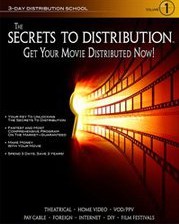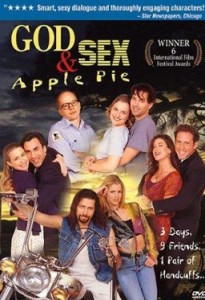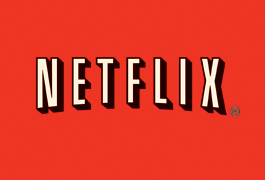Jerome Courshon, Deemed the Distribution Guru and Creator of “Secrets to Distribution,” Shares His Hard-Learned Secrets with AGENDA MAGAZINE – The Introduction to a Four-Part Series Right Here at the Indie Hotspot!
By Kaylene Peoples | May 4th, 2011 | Category: Film Distribution, Indie Hotspot | Comments Off on Jerome Courshon, Deemed the Distribution Guru and Creator of “Secrets to Distribution,” Shares His Hard-Learned Secrets with AGENDA MAGAZINE – The Introduction to a Four-Part Series Right Here at the Indie Hotspot!
 If you’ve made a movie and you need distribution, whether it’s traditional or doing DIY (Do it Yourself) approach, this is the ultimate program to understand the game or actualize having distribution; getting it, securing it for traditional distributors, or getting it in the marketplace yourself and learning what you need to do to actually drive traffic, build an audience, and get people to buy your film. Nobody in the world until now has ever created a program like this, “Secrets to Distribution – Get Your Movie Distributed Now.”
If you’ve made a movie and you need distribution, whether it’s traditional or doing DIY (Do it Yourself) approach, this is the ultimate program to understand the game or actualize having distribution; getting it, securing it for traditional distributors, or getting it in the marketplace yourself and learning what you need to do to actually drive traffic, build an audience, and get people to buy your film. Nobody in the world until now has ever created a program like this, “Secrets to Distribution – Get Your Movie Distributed Now.”
“I hate to admit this, but my first movie took me four years to get distribution with anybody. I ultimately ended up with Warner Brothers. I did everything I knew to do and everything that I thought to do was more than most filmmakers knew. I did things like talk to all my filmmaker colleagues that I met on the film festival circuit. ‘What home video companies have you submitted to?’ ‘Whom have you submitted to? Will you share that with me?’”–Jerome Courshon
Jerome Courshon, the producer of “Secrets to Distribution” had put together a list, which he revised periodically of whom to submit to. He even asks filmmakers in his classes, “How many people looked down the aisle on the back of the video boxes to see who they should send their film to?” And a bunch of hands go up.
“I did that, too, and that’s such an incomplete way to do it. When I was done on my journey, I had realized that in the first couple of years of trying for distribution, not counting the studios, I really only hit about 20-25 home video companies. Those were the only ones I knew existed.” –Jerome Courshon
There were no resources out there except for one, The Hollywood Creative Distribution Directory. “At that time, that directory was crap. It was a kitchen sink directory of distribution,” said Jerome. “It was unyielding, unclear as to which distributors handled which market. So there were a lot of bottom feeders in there. There still are. It was just impossible to use. It wasn’t worth anything really at that time. It’s better now. There was just nobody out there teaching distribution. Even Peter Broderick wasn’t out there doing anything yet. If a program like this had existed, I could have cut my four years down to under a year, maybe even just a few months.”

 So when Jerome was done finally getting distribution, he was so burned out. He took a couple of years off and didn’t want to make another movie. In that time, he wrote some articles for film magazines, Movie Maker, Indie Slate. People would read his articles and they’d track him down online, or they’d get his phone number and they’d ask him for advice.
So when Jerome was done finally getting distribution, he was so burned out. He took a couple of years off and didn’t want to make another movie. In that time, he wrote some articles for film magazines, Movie Maker, Indie Slate. People would read his articles and they’d track him down online, or they’d get his phone number and they’d ask him for advice.
“I gave people an hour of my time. I realized how impossible it was to really tell somebody what they needed to do with their movie in an hour—it needs to be walked through a series of steps. I couldn’t do that in an hour.” –Jerome Courshon
Within a period of time after his movie came out, his colleagues’ movies came to fruition and also needed distribution. They contacted Jerome, who in turn sat down with them. He looked at their press materials and guided them to get their packages together. He advised them on whom to submit to and how to do it. Two of the filmmakers he helped got distribution in less than four months—what he had learned from getting his own film distributed, this wasn’t an anomaly. Another filmmaker he had consulted with got distribution in under a year—his journey was a little harder, but he still got distribution in one-fourth the time Jerome got it.
“They told me I should be teaching this. I started at the Learning Annex and I enjoyed it; but the pay was terrible, so I canceled my third class. I set my own classes. The first one was in LA with roughly 80 people. In one full day I could walk an entire class through what they needed to do to get distribution. I taught one-day classes for a couple of years, and I really felt like it needed to expand because DIY (Do it Yourself) was beginning to be something that filmmakers were actually seriously considering and doing now.” –Jerome Courshon
Interview by Kaylene Peoples
Responses by Jerome Courshon
How did you finally get your movie distributed?
 I had done a DIY approach myself. When I couldn’t get distribution, I raised money for God, Sex & Apple Pie to booking the movie theatrically in as many cities as I could afford. So I opened it in Chicago and New York. It was totally a one-person thing. It was challenging but gratifying as well learning how to play the game, market the film on the street without a lot of money for newspaper advertising, utilizing radio, etc. I included this in my class. If you want to put your movie in the theaters yourself, you can, but it’s certainly not for the faint of heart. Filmmaking is not for the faint of heart, and putting your movie in the theater is really not for the faint of heart; you kind of need a team. When I expanded the class for two days, I included more DIY and more information about digital platforms: where to put the movie in the digital arena, because right now there are a lot of visual platforms and a number of them are not paying filmmakers. Most filmmakers don’t know it. (It’s not iTunes or Netflix).
I had done a DIY approach myself. When I couldn’t get distribution, I raised money for God, Sex & Apple Pie to booking the movie theatrically in as many cities as I could afford. So I opened it in Chicago and New York. It was totally a one-person thing. It was challenging but gratifying as well learning how to play the game, market the film on the street without a lot of money for newspaper advertising, utilizing radio, etc. I included this in my class. If you want to put your movie in the theaters yourself, you can, but it’s certainly not for the faint of heart. Filmmaking is not for the faint of heart, and putting your movie in the theater is really not for the faint of heart; you kind of need a team. When I expanded the class for two days, I included more DIY and more information about digital platforms: where to put the movie in the digital arena, because right now there are a lot of visual platforms and a number of them are not paying filmmakers. Most filmmakers don’t know it. (It’s not iTunes or Netflix).
The ones that aren’t paying, do you list those in the kit?
It’s done very carefully. In one of the sections, I have an aggregator who deals with all the major sites. She has a library of 70 movies. I touch base with her periodically to find out who is or isn’t paying. We talk about all the major companies in the program. She would phrase her response, “We haven’t seen any checks yet.” We’re letting filmmakers know that depending on whom they send their movie to, they may not see any money.
That’s a deterrent, something good to know. You don’t want to waste your time.
 Absolutely. I tell people that the major sites to be on are iTunes and Netflix. There are issues with Netflix. Filmmakers are getting paid if they make a deal, but Netflix doesn’t pay a lot of money. Unfortunately, Netflix is like several nails in the coffin of independent filmmaking because of the devaluation of our films—devaluation in the sense that Netflix is partly the reason that brick and mortar video stores are dying. Netflix is such a great business model that they have killed off over half the brick and mortar video stores. Independent filmmakers were making a decent amount of money with home video. Because Netflix may take 30 copies of your movie and can satisfy the entire country, what are they going to pay per copy, 8 or 9 bucks? You can’t even pay rent with that for a month. In the brick and mortar video stores, if you went with a distributor who pitched them well, if 70 percent of those stores took two copies, that was tens of thousands of copies you were selling.
Absolutely. I tell people that the major sites to be on are iTunes and Netflix. There are issues with Netflix. Filmmakers are getting paid if they make a deal, but Netflix doesn’t pay a lot of money. Unfortunately, Netflix is like several nails in the coffin of independent filmmaking because of the devaluation of our films—devaluation in the sense that Netflix is partly the reason that brick and mortar video stores are dying. Netflix is such a great business model that they have killed off over half the brick and mortar video stores. Independent filmmakers were making a decent amount of money with home video. Because Netflix may take 30 copies of your movie and can satisfy the entire country, what are they going to pay per copy, 8 or 9 bucks? You can’t even pay rent with that for a month. In the brick and mortar video stores, if you went with a distributor who pitched them well, if 70 percent of those stores took two copies, that was tens of thousands of copies you were selling.
Would you recommend Netflix? Or would you say only go with them as a last resort?
I would not recommend Netflix. I would consider Netflix to be a last stop for the Internet. iTunes should be a filmmaker’s first stop (or one of the first stops) online. iTunes pays filmmakers on time.
So is there any value at all in being with Netflix?
 Yes, the value for a filmmaker is if they have a high profile film that has gotten a lot of notoriety, and they can sell several hundred copies to Netflix, then that’s at least something: it’s not 30 copies; it’s a few hundred. But if the film doesn’t have a lot of buzz, one of the tricks some filmmakers are doing right now is they’re getting people to add it to their queue. In theory, if you have a movie that hasn’t been released and a thousand people have it in their cue at Netflix, they will look at that and buy more than ten copies. That’s a strategy a few filmmakers are pulling to try to bump up the number of copies that Netflix will take from them. The value with Netflix is if you get into the “watch now” streaming service, they pay more money for that. So if they took your movie for the “watch now” and the hard DVD, you should see more money with the “watch now” component.
Yes, the value for a filmmaker is if they have a high profile film that has gotten a lot of notoriety, and they can sell several hundred copies to Netflix, then that’s at least something: it’s not 30 copies; it’s a few hundred. But if the film doesn’t have a lot of buzz, one of the tricks some filmmakers are doing right now is they’re getting people to add it to their queue. In theory, if you have a movie that hasn’t been released and a thousand people have it in their cue at Netflix, they will look at that and buy more than ten copies. That’s a strategy a few filmmakers are pulling to try to bump up the number of copies that Netflix will take from them. The value with Netflix is if you get into the “watch now” streaming service, they pay more money for that. So if they took your movie for the “watch now” and the hard DVD, you should see more money with the “watch now” component.
Seems like some other Internet companies would be trying to compete for a piece of the indie filmmaker’s pie.
With V.O.D. (Video on Demand) and so many different companies like Amazon.com, and they’re looking to compete with Netflix based on what they’re preparing with their V.O.D. viewing, who knows what will happen? There are two types of V.O.D.: online (Netflix, Amazon, and others) and there’s cable (Time Warner, Direct TV, etc.) where you order a movie for 4.99 and you can watch it for 24 hours. There is so much shifting going on in that market. A number of video sites I mentioned before haven’t been paying filmmakers. There has been a shakeout for the past few years. Many have gone, and there are still a number of them that have been remaining, and they may go, too. This year or next year could be their death knell. When you don’t pay filmmakers, word gets around, and they don’t get the really good movies.
“I have gone through the distribution kit, and I am hopeful that I can get my film, Redemption, which had won some awards, but never got released, distributed. After speaking with Jerome, I have learned so much about the road to getting distribution and will no longer be taking the head-in-the-sand route that so many independent filmmakers take. As a topic I am passionate about, as are the Indie Hotspot readers, Redemption will be the case study for his program. If an 8-year-old film can get distribution, why can’t yours? I will be sharing my progress with you, using the ‘Secrets to Distribution.’” —Kaylene Peoples, Agenda Magazine
This interview with distribution expert Jerome Courshon serves as an introduction to a 4-part series on distribution for independent filmmakers based on the information in the distribution kit, which costs $600.00. The kit contains nine DVDs and accompanying books. Jerome has been so kind to share his secrets, and he will be offering a 20% discount to filmmakers who would like to purchase the kit through Agenda Magazine. To learn more about “The Secrets to Distribution,” visit www.distribution.la.








